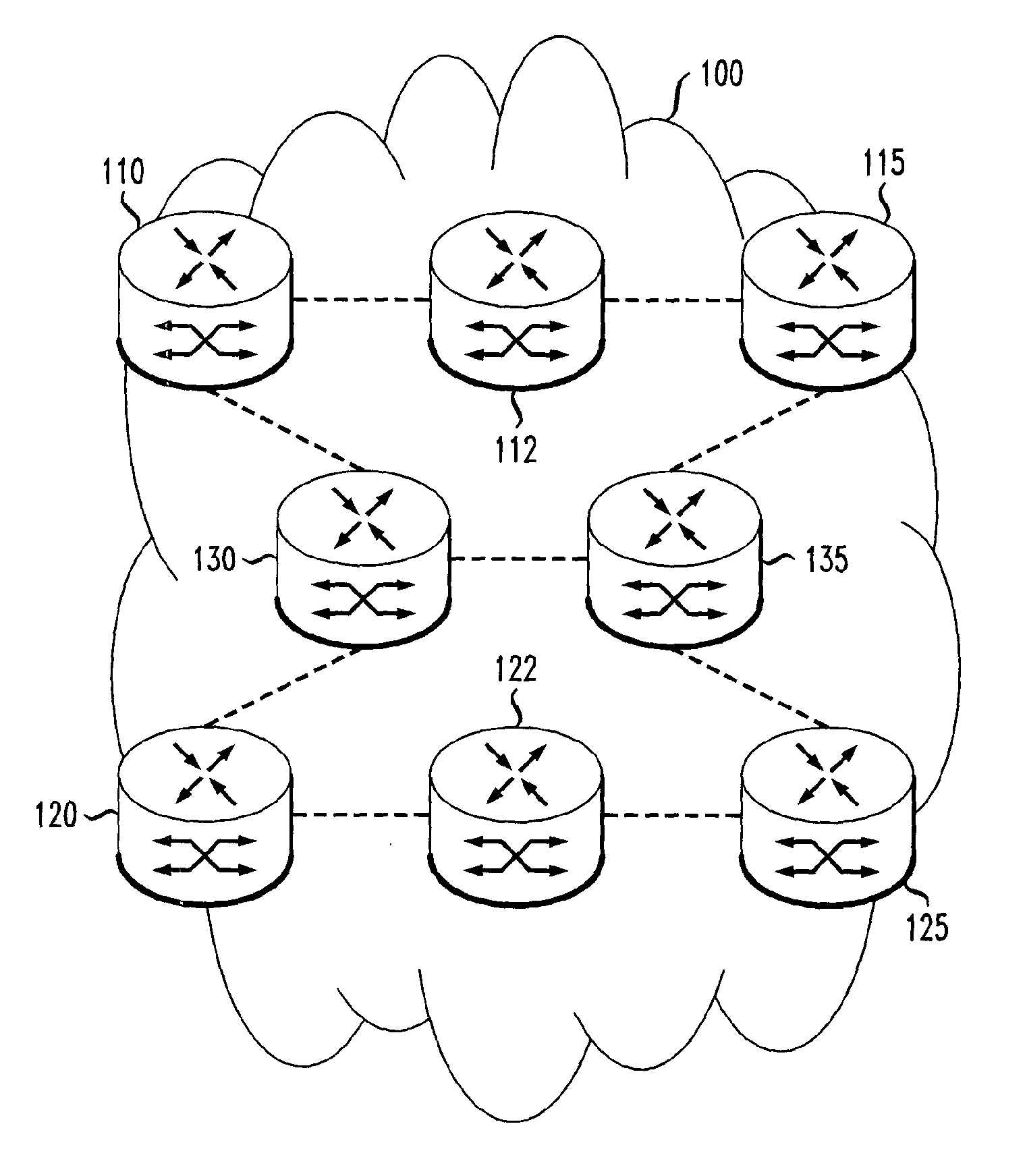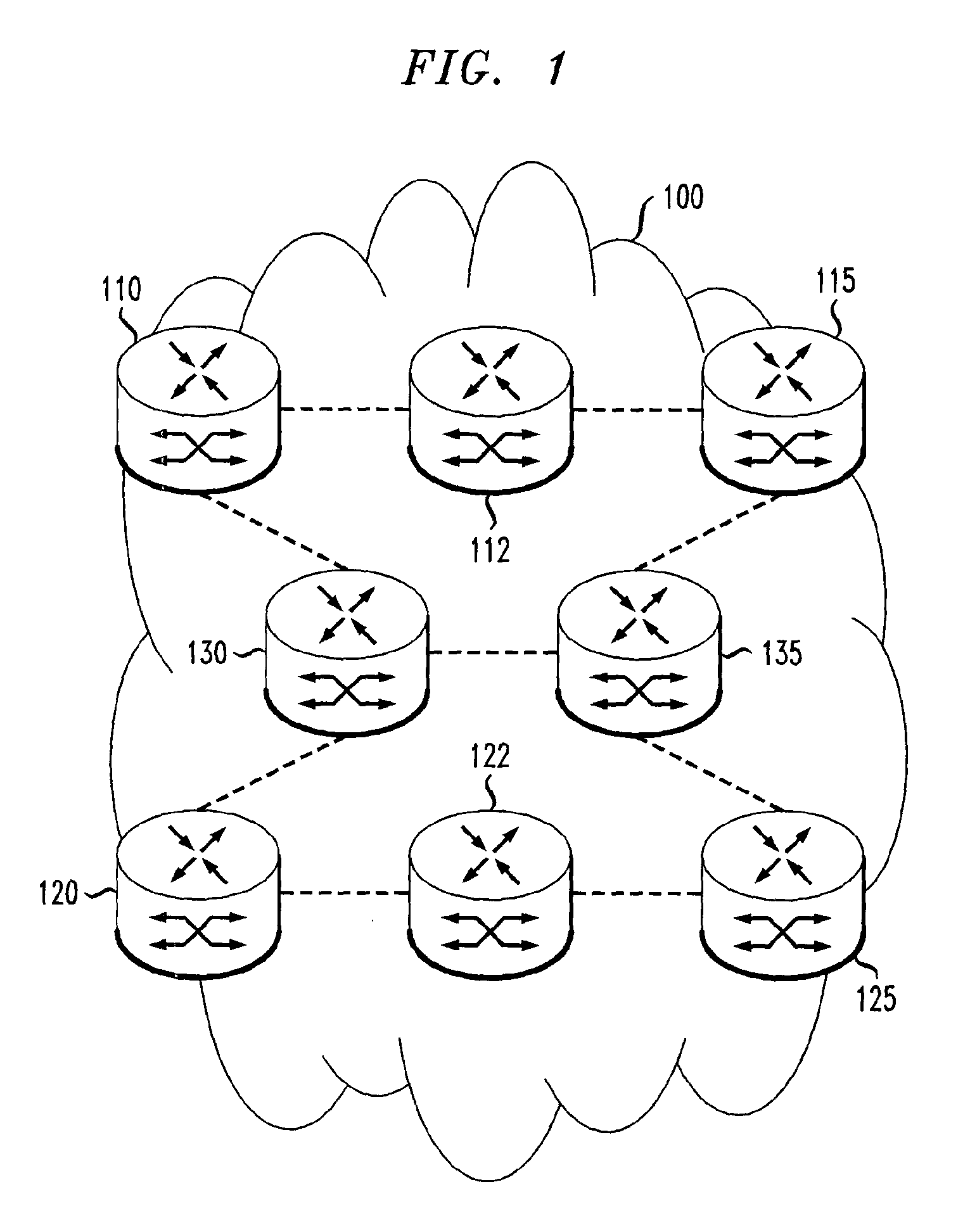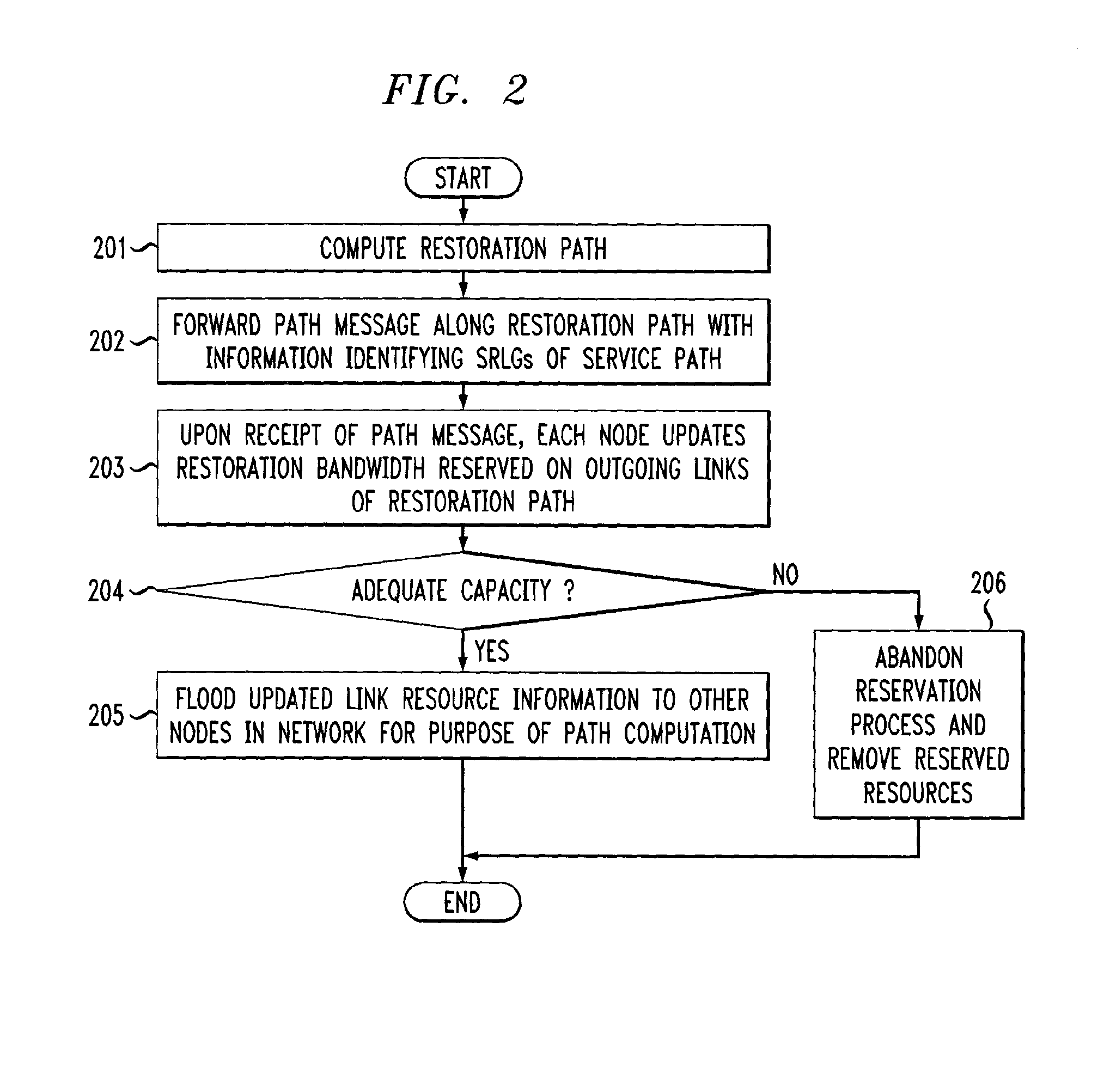Method for Restoration and Normalization in a Mesh Network
a mesh network and network restoration technology, applied in the field of telecommunications networks, can solve the problems of increasing the cost of the provider, addressing the need for fast failure restoration in such networks, and inefficient capacity utilization of the single-ring, and achieve the effect of minimal service traffic interruption
- Summary
- Abstract
- Description
- Claims
- Application Information
AI Technical Summary
Benefits of technology
Problems solved by technology
Method used
Image
Examples
Embodiment Construction
[0018]FIG. 1 is a diagram of a label switched network 100. The nodes 110, 112, 115, 120, 122, 125, 130, 135 of the network 100 are arranged in a mesh topology illustrating the sharing of restoration bandwidth across multiple independent failures.
[0019]A label switched path (“LSP”) through the network 100 is established using the exchange of label distribution messages between adjacent nodes. See P. Ashwood-Smith, et al., “Generalized MPLS—Signaling Functional Description,” IETF Network Working Group, Internet Draft, http: / / www.ietf.org / internet-drafts / draft-ietf-mpls-generalized-signaling-01.txt (November 2000), which is incorporated by reference herein. The current GMPLS signaling specification is based on extensions to existing protocols—namely RSVP-TE and CR-LDP. See, e.g., L. Berger, et al., “Generalized MPLS Signaling—RSVP-TE Extensions,” IETF Network Working Group, Internet Draft, http: / / www.iethorg / internet-drafts / draft-ietf-mpls-generalized-rsvp-te-00.txt (November 2000); an...
PUM
 Login to View More
Login to View More Abstract
Description
Claims
Application Information
 Login to View More
Login to View More - R&D
- Intellectual Property
- Life Sciences
- Materials
- Tech Scout
- Unparalleled Data Quality
- Higher Quality Content
- 60% Fewer Hallucinations
Browse by: Latest US Patents, China's latest patents, Technical Efficacy Thesaurus, Application Domain, Technology Topic, Popular Technical Reports.
© 2025 PatSnap. All rights reserved.Legal|Privacy policy|Modern Slavery Act Transparency Statement|Sitemap|About US| Contact US: help@patsnap.com



